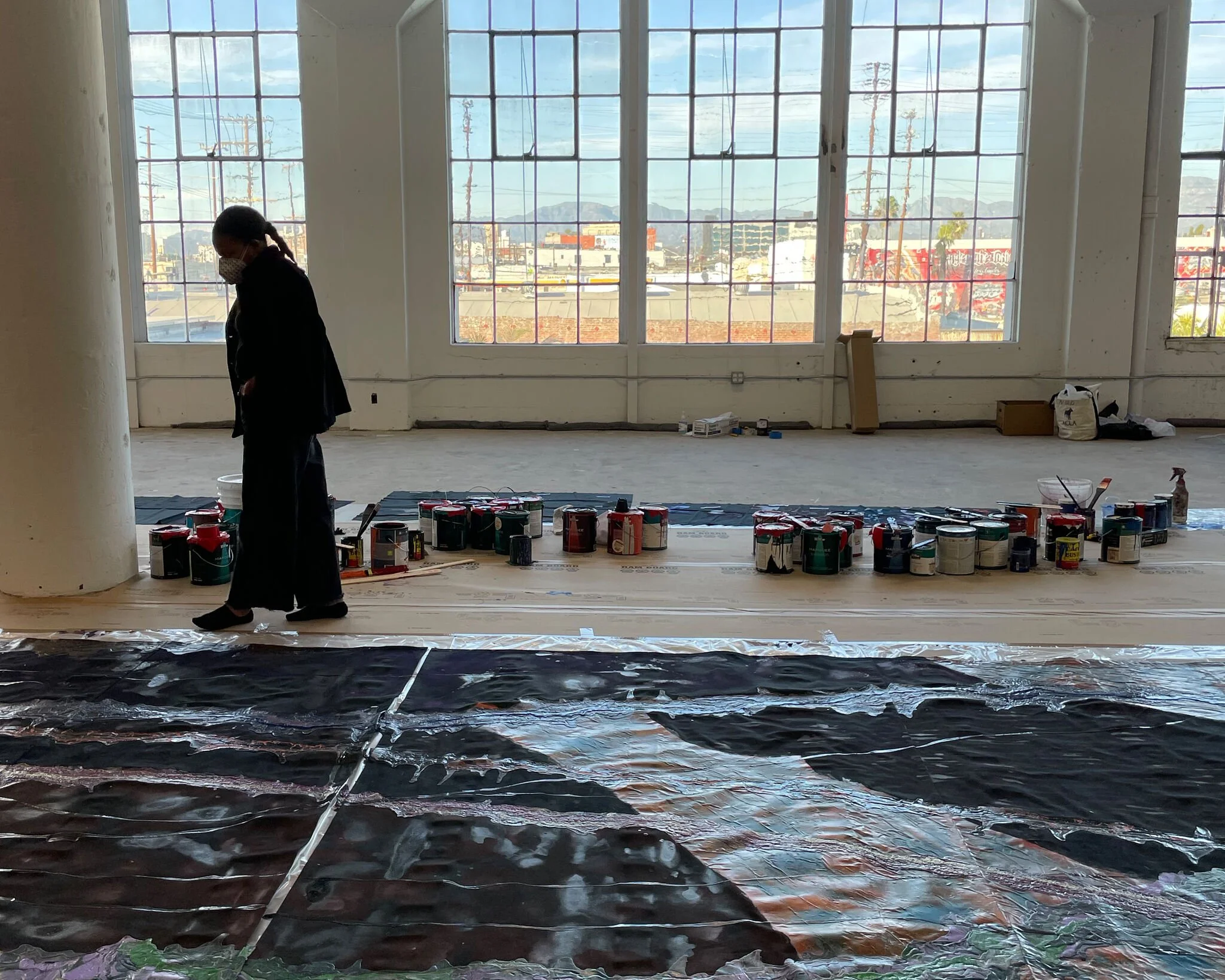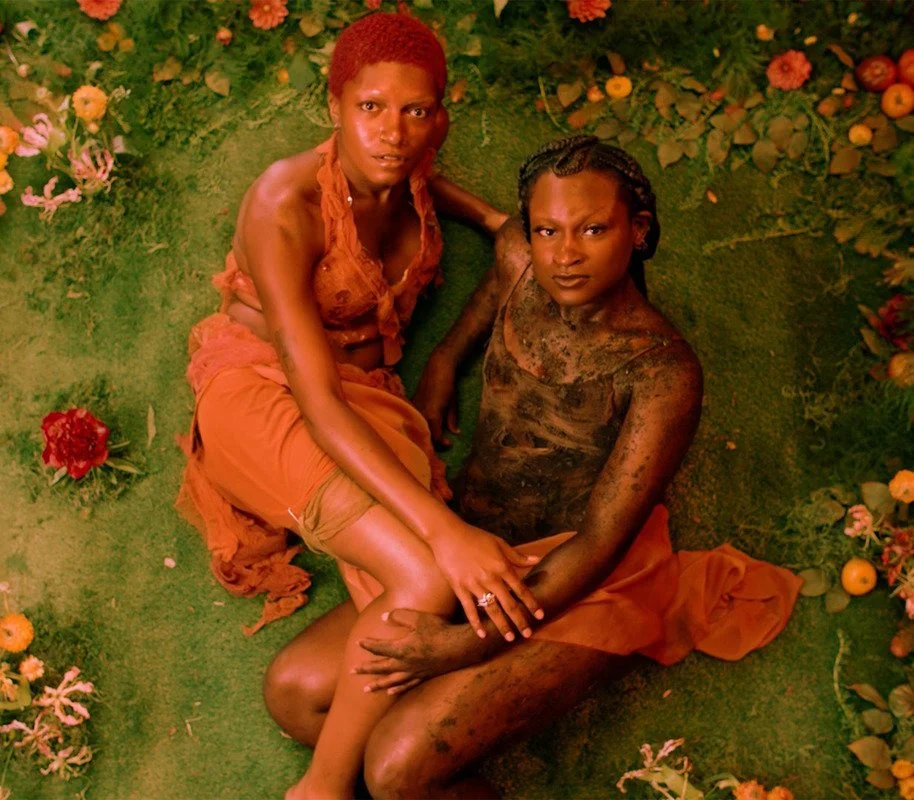Making the 2022 Biennial: An Interview with the Curators
“Quiet as It’s Kept”
Whitney Museum of American Art
New York, 99 Gansevoort Street
The Whitney Biennial has surveyed the landscape of American art, reflecting and shaping the cultural conversation, since 1932. The eightieth edition of the landmark exhibition is co-organized by David Breslin, DeMartini Family Curator and Director of Curatorial Initiatives, and Adrienne Edwards, Engell Speyer Family Curator and Director of Curatorial Affairs. Titled Quiet as It’s Kept, the 2022 Biennial features an intergenerational and interdisciplinary group of sixty-three artists and collectives whose dynamic works reflect the challenges, complexities, and possibilities of the American experience today.
In advance of the 2022 Biennial’s opening on April 6, Breslin and Edwards look back on three years of intense collaboration, unforeseen challenges, and communing with artists. Their generative professional and personal partnership and mutual admiration are unmistakable throughout their conversation: Edwards raves about Breslin’s knack for diplomacy; he reveres her rigorous intellect and direct conversational approach with artists. The pair share their process and secrets to organizing an overwhelmingly daunting project. Their guiding principle? “It’s got to be buck wild.” A fitting expression of our strange and precarious times.
What are some memorable things that have happened while organizing the Biennial? Any surprises?
David Breslin: We were at the airport in New Orleans on our way back to New York on March 12, 2020, when we heard the news that we could come into the Museum the next day to grab our stuff. Then Adrienne and I didn’t see each other for five months. I’ve thought a lot about the idea of compression in this moment. It’s hard even to remember how much has happened in these three years. But your body feels it, the work will feel it, and I hope that the exhibition will feel that way—something that takes longer to blossom or is geological like an earthquake but has its moment.
In addition to all of these things that have happened in the country, the memorable thing for me has been the relationship that I’ve developed with Adrienne. You are forged in a process like this, where you start as colleagues and become friends and family through the work.
Adrienne Edwards: I almost never co-curate projects, so it’s been an incredibly interesting, generous experience for me—the amount that I’ve learned, the amount that I’ve grown, the amount that I’ve expanded myself in so many ways in making the show with David. It’s the gift of what it means to collaborate. I expect to collaborate with artists. It’s a different thing when you’re collaborating with another colleague. I feel like David is my professional partner for years to come. We’ll just bandy about forever until we’re in Jamaica doing pool to beach rotations, you know? At least that’s where I’ll be.
And I remember celebrating David’s birthday in the summer of 2020, dancing on tables with his brother . . .
David Breslin: There’s video!
How did you get started putting together the artist list?
Adrienne Edwards: Early on, we went to have drinks together at a bar in Fort Greene. I had my list, and David had his list. They were in no way complete, but there was considerable overlap. It was a starting point, a sense of heading in the same direction. David and I are committed to very similar things in our work as curators and scholars although we may, in some instances, approach them from different vantage points. We’re both deeply committed to history. That has characterized this Biennial to a great extent.
David Breslin: At the bar, we talked a lot about artists who are no longer with us. Biennials have historically focused on young and emerging artists. We wanted to work away from the idea that this show is just a gathering of people working in the last two years. What connections can you bring to different generations to enable a conversation about how the past inflects the present, how the present changes and inflects what the future can be, and how all of those are interlinked?
And when we would go into artists’ studios, there were ghosts around, past generations of artists animating ideas in that work, different connective tissues that made those ideas come alive. So we thought, why can’t there be dead artists if their ideas are more alive than ever and that the spirit of their art is still around?
The Biennial curators travel together for site visits. Photograph by David Breslin
What were some throughlines that guided your process?
David Breslin: There’s a phrase that we toss around a lot: “buck wild.” It needs to be weird. It needs to press something. It needs to be authentic and genuine to an aspirationally wild mind. The Biennial is an opportunity for artists and curators to engage in the most compelling, hard, interesting, hopefully beautiful, contemporary ideas of what art and culture mean right now.
Adrienne Edwards: We decided to call our version Quiet as It’s Kept. The phrase is a colloquialism typically said before something that should be kept secret. We borrowed it from the first line of Toni Morrison’s The Bluest Eye. “Quiet as it’s kept there were no marigolds in the fall of 1941.” It’s also the title of the 1960 album by jazz drummer Max Roach. And, notably, it was the title of an exhibition of abstract art David Hammons organized in Vienna in 2002. Hammons was interested in abstraction’s ability to speak to lived experience, an important thread in our thinking.
I’m a big believer that museums are spaces in which we come to marvel: marvel at life. The exhibition is an occasion for us to be moved, to be struck by something. Each person who walks into the gallery comes with a set of experiences that then color and determine how they meet what is there. Similarly, artists all come from different backgrounds. As many artists are in this show, there are that many different life experiences.
Did the pandemic change the typical studio visit process?
Adrienne Edwards: We were able to travel between October and March. We went to Los Angeles and the Bay Area; we did Upstate New York and Western Massachusetts; Miami; Dallas, Houston, and Fort Worth; and New Orleans. The morning after we got back to New York, we woke up to a very different world. After that, we were trying to figure out how we were going to maintain the momentum of the show.
One of the surprising things about that turn that no one could’ve expected is that we were vulnerable, we were sorting ourselves out personally, and the artists were vulnerable too. The dynamic nature of our conversations with them was markedly different. We didn’t talk about, “Oh, how long have you been in this studio?” Instead, it was like, “How are you? How is your family? Are you okay?” We often had to do multiple interviews or conversations as a result of that because we spent so much time just checking in. That created a different point of departure that led to a deep kind of intimacy.
David Breslin: Sometimes traveling to a city to see artists can lead to serendipity and surprise. But it also means that it’s done after one visit. You don’t go back. When everything went virtual, we had to really check in with the artists. It was straight to the real stuff, and people were vulnerable and raw, and you felt their precariousness. It’s hard to tell what an artwork looks like on a screen. We had to rely on people’s words more, but we also had to realize that words aren’t sufficient when talking about art.
In addition to that, we did every meeting and every virtual studio visit together. That was something that we decided very early on.
Adrienne Edwards visiting an artist’s studio. Photograph by David Breslin
What kind of experience do you want visitors to have in the show?
David Breslin: One thing that we resolved was to have the two main floors of the exhibition feel completely different from each other to address the polarity of the moment. The fifth floor is open, light-filled—there’s no permanent architecture. We want it to feel open, precarious, maybe hopeful, maybe not. The sixth floor is more of a labyrinth: dark walls, a space where you’re more led. It has a different kind of intimacy.
The idea of activation, change, or metabolism—that the show has a life—has also been part of our thinking since the start. The show you’ll see if you come in April will be completely different from the one you would see in July or August. For example, an artwork like Alex Da Corte’s RoyGBiv will change over time. The artist’s brother will come in at several different points during the show’s run and paint the cube a different color.
That reflects the conversations we were having and the artwork we were looking at. It felt like a responsibility for us as a museum to take on what change or precarity could look like and not just ask the artist to do it.
Adrienne Edwards: This kind of evolution is meant to convey the times in which we live: precarious, in flux, unstable, but also dynamic—a sense of time being suspended.
Another thing that was really important from very early on is that the show be interdisciplinary. We want to show the range of ways in which artists are working. So while there’s a lot of, say, painting and sculpture, many of those painters and sculptors also work in different mediums. They make films, or they write scores for performances. This motley mode of making and thinking was present with many of the artists we spoke with and selected for the show.
It was important for us to map, in an intergenerational way, the artists who are questioning identity and using modes of making that are maybe surprising or that one wouldn’t expect, who are comfortable with a lack of certainty around questions of representation, questions of belonging. They are okay with leaving it open and allowing this inherent multiplicity of the self. We want to show that fierce sense of criticality and sensitivity to radical openness.
Ralph Lemon is known primarily as a choreographer, but he describes himself as a conceptualist. Ralph has made drawings for over twenty-five years. They’ve never been shown together, and we’re presenting them here.
Do you have any tips for the next Biennial curators?
Adrienne Edwards: Creating this show does not happen in a vacuum. It reflects us, the times and context, and the conditions in which we made it. But there’s also a deep, rich institutional history that should be turned to, researched, considered, contemplated. Unlike other biennials, this one is attached to a collecting museum. This show is an opportunity to shape and determine the future of the Whitney: what our priorities are, the exhibitions that will come next. That said, be sure to break some rules.
David Breslin: Like every curator who takes on the Biennial, you do your listening tour with the people who came before you to try to learn some lessons or avoid mistakes. So I will relay a piece of advice that we got from Elisabeth Sussman and Thelma Golden: you have to do the show that you want to do. At the end of the day, people are going to love it or despise it. If you’re lucky enough to have someone you really admire and like doing it with you, this will be the project you remember most in your career. It’s kind of wild to think about that but I’m ready to retire after this!







